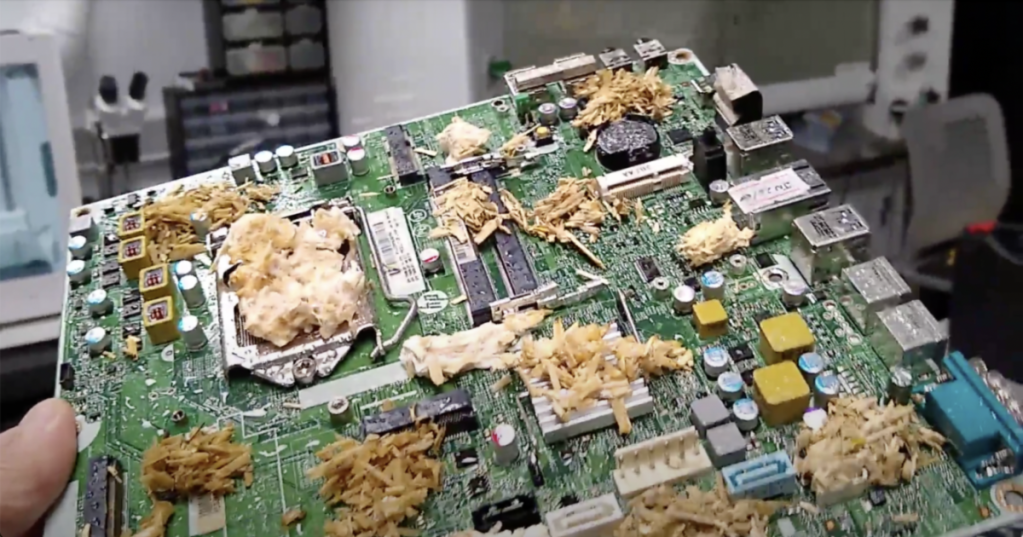If you think about it, mushrooms are one of those items that have a ton of different applications. They’re food, they’re fungus, they help in the garden, they can play tricks on your mind or poison that person who just won’t quit.
Don’t do that last one, y’all. Very bad advice.
What I did not imagine you could do with them, though, was build a computer – but that’s what Unconventional Computing Laboratory is up to right now.
Image Credit: Andrew Adamatzky
The lab was founded in 2001 on the belief that the computers of the future will be made of chemical or living systems that will work together with hardware and software.
They theorize this would allow information to be processed and analyzed in new ways – that mushrooms can carry out computing and sensing functions.
They would do this, says director Andrew Adamatzky, with their mycelium (the web-like root structure) acting as conductors for the electronic components of the computer.
“I mix mycelium cultures with hemp or with wood shavings, and then place it in closed plastic boxes and allow the mycelium to colonize the substrate, so everything then looks white. Then we insert electrodes and record the electrical activity of the mycelium. So, through the stimulation, it becomes electrical activity, and then we get the response.”
Researchers are working on things like quantum computers in order to encourage the machines to be more dynamic in the way they see and solve problems. If they could process in different ways, or utilize more multi-dimensional functions, then they could create more human-like responses.
Mushrooms stay connected with the environment and other organisms around them using the adorably coined “wood wide web.” The scientists at this lab believe, if they could tap into them, they could not only understand underground ecosystems but improve our own information systems.”
Image Credit: Andrew Adamatzky
Even if mushroom computers could not be as fast as their technological counterparts, they do have some advantages, like self-regeneration, using relatively little energy, and the ability to grow and evolve.”
These are an evolution from slime mold computers, which worked because the molds can figure out their way around problems. They can also be controlled through different stimuli and used to simulate logic gates, which are the basic building blocks for circuits and electronics.
“With slime mold, we imitated pathways and roads. We even published a book on bio-evaluation of the road transport networks. Also, we solved many problems with computation geometry. We also used slime molds to control robots.”
Those experiments led him in a new and exciting direction.
“We found actually that mushrooms produce action potential-like spikes. The same spikes as neurons produce. We’re the first lab to report about spiking activity of fungi measured by microelectrodes, and the first to develop fungal computing and fungal electronics.”
Mycelium communicate signals in a way similar to the neurons in the human brain, so researchers can use the “spikes” of activities and patterns to basically code the mycelium network.
Adamatzky says they’re working on mapping the mycelium’s circuits based on the electrical responses they’ve witnessed.
“If you send electrons, they will spike. It’s possible to implement neuromorphic circuits. We can say I’m planning to make a brain from mushrooms.”
Image Credit: Andrew Adamatzky
They’ve worked with oyster, ghost, bracket, enoki, split gill, and caterpillar fungi so far.
“Right now it’s just feasibility studies. We’re just demonstrating that it’s possible to implement computation, and it’s possible to implement basic logical circuits and basic electronic circuits with mycelium. In the future, we can grow more advanced mycelium computers and control devices.”
It can be hard to imagine, but if you can manage it, the possibilities are endless.
